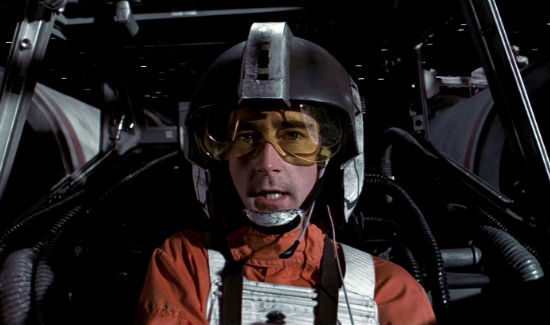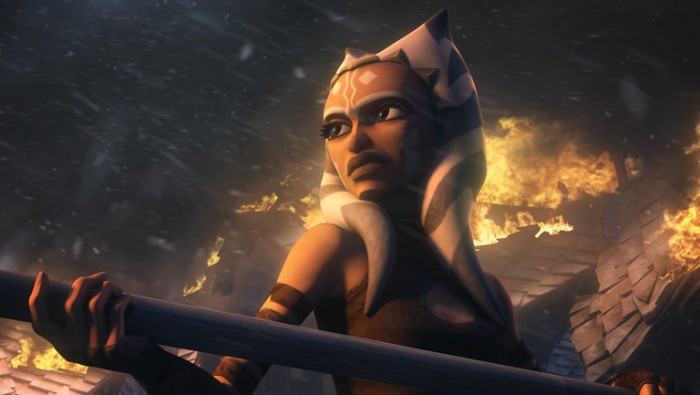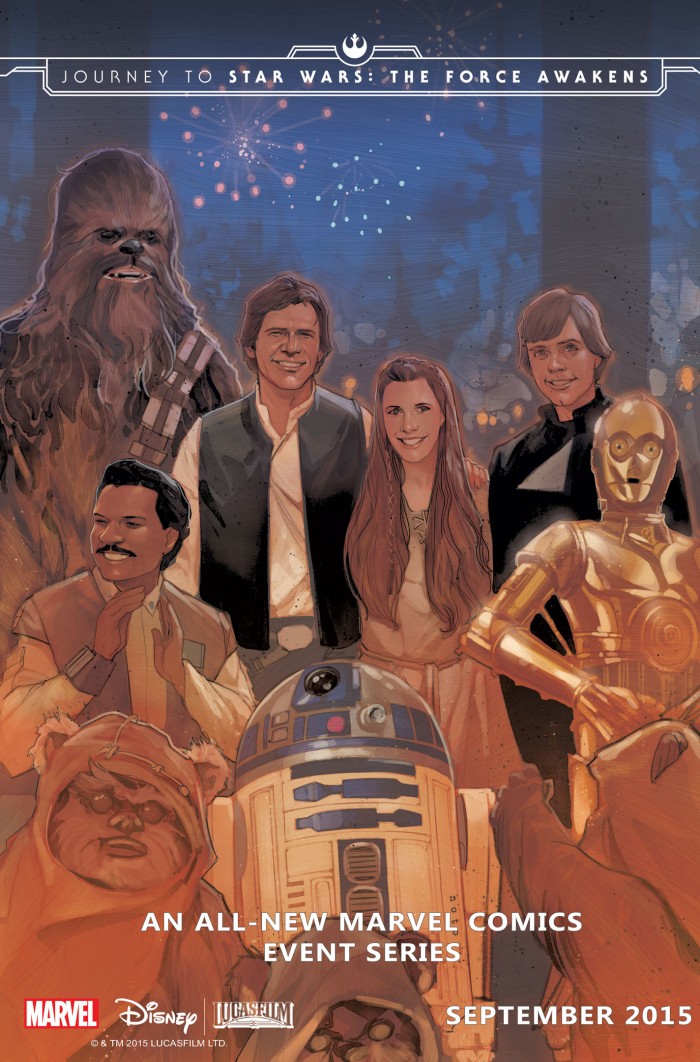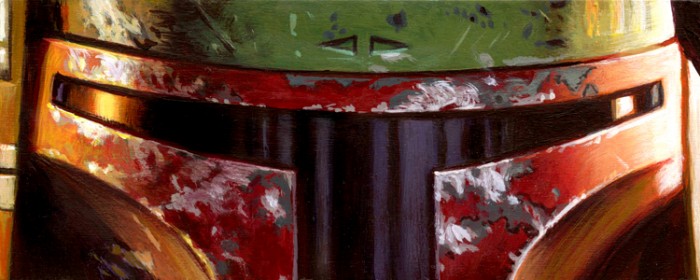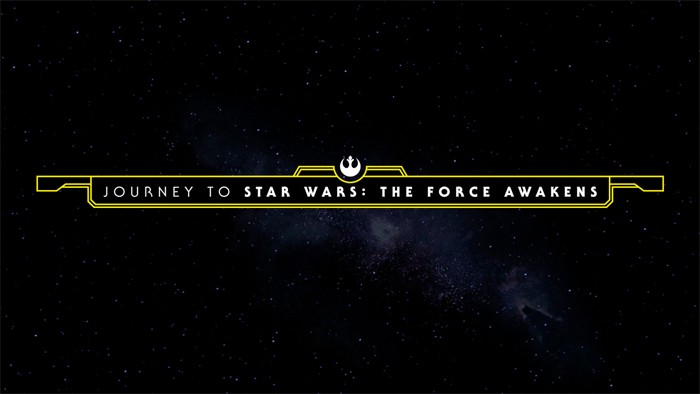Is 'Star Wars: Aftermath' A Good Pit Stop On The Journey To 'The Force Awakens'?
It's officially Force Friday, and in addition to all the new toys and various goodies you can get related to Star Wars: The Force Awakens, today also brings the first official books that are part of The Journey to The Force Awakens, filling in the gap of time between Return of the Jedi and the new sequel.
The most immediate and informative story with regards to the state of the galaxy after the events of Return of the Jedi is Star Wars: Aftermath by Chuck Wendig, making his debut as an author of Star Wars stories. So how does the book hold-up on our Journey to The Force Awakens, and does it give us any hints about what to expect in Episode VII?
Get some information on what to expect from the book and also Star Wars Aftermath reviews below!
If you don't know much about Star Wars: Aftermath and you're curious about the story within the 366-page novel, here's the inside jacket that gives you a better idea of what to expect, including a character from the original trilogy that fans should be familiar with:
For those curious, here's the STAR WARS: AFTERMATH inside jacket. Not sure if it's online already. #ForceFriday pic.twitter.com/isyTbhYsOi
— Ethan Anderton (@Ethan_Anderton) September 3, 2015
Warning, from here on out we might get into spoiler territory for Star Wars: Aftermath, so if you're going to read the book, steer clear of everything else on this page. But the second page will be spoiler-free for you to get an idea of how the book is being received by fans, including myself. So beware of spoilers on this page only from here on out!
The Characters and the Missions
That's a fairly vague description of what you'll find in the book, so here's a good synopsis from the review at MakingStarWars.net that lays out the key characters and what they're doing with regards to each other a little more clearly:
Set almost immediately after Return of the Jedi, the book follows less a single plot thread than it does several that are triggered by an instigating incident. Wedge Antilles, Rebel pilot responsible in part for the destruction of both Death Stars, is on a reconnaissance gig for the Rebellion – now known as the New Republic. He stumbles upon a high-level Imperial meeting ground on the backwater jungle world of Akiva, and is soon captured by Admiral Rae Sloane, one of the last surviving commanders of the Empire and a woman hellbent of reforming the Imperial Order from the ground up.
Wedge's distress call shortly before capture gets the attention of Norra Wexley, another Rebel pilot who's arrived at Akiva looking for her son, Temmin. They both attract the attention of Sinjir Rath Velus, a former Imperial Loyalty Officer with a smarmy tone and an alcoholic streak, and Jas Emari, a Zabrak bounty hunter out to kill Sloane and her cohorts. Together, the four of them must unite to rescue Wedge, take down Sloane, liberate Akiva and stop the new Empire's formation in its crib.
Wedge Antilles is not exactly the hero in this story. In fact, he ends up really needing help. But there's a solid ensemble nature to the story in how it jumps around to the perspectives of each of the main characters outlined above.
How Wedge Joined The Rebel Alliance
In addition, there are small pieces here and there that tie into the rest of the new canon. For example, there's a quick moment where Wedge Antilles has a quick memory flashback to how he became a Rebel pilot, and we learn that he was actually recruited by the agent known as Fulcrum, who we now know is none other than Ahsoka Tano from The Clone Wars.
The prequels even have a little bit of mythology mentioned in the book with talks of things like droidekas and even a modified Battle Droid that has been painted red and black, working as Temmin's somewhat flaky but mostly reliable helper that the kid calls Mr. Bones.
But that's not the only references to other Star Wars events and characters.
The State of the Galaxy, References to Original Trilogy
Outside of the main story, which is the struggle of Akiva and how all these characters interact with one another, Wendig has scattered a collection of 15 interludes that give us an idea of how the rest of the galaxy is dealing with the fall of the Empire.
It begins with a familiar setting on Coruscant, when the citizens tear down the statue of Emperor Palpatine, something George Lucas added in the Special Edition of Return of the Jedi. But then we see things that we didn't see in that celebration, the Imperial forces that come and break-up the celebration by firing lasers into the crowd and killing those cheering in the face of the Empire.
Throughout the book there are other planets features, showing us things like a brief moment before a live news broadcast with the public relations representative for Mon Mothma, who is now Chancellor of the new Galactic Senate that has come together. Or there's a clash with a family where one son is an Imperial academy dropout, and another is a Rebel Alliance sympathizer.
And for fans hoping of ties to the original trilogy, these little interlude tidbits also give us a taste of Han Solo and Chewbacca on a rogue mission, a fight involving the bounty hunter Dengar, and there are also some ties to the new Star Wars: Uprising mobile game with references to Lando Calrissian and Lobot.
Each of the interludes adds just enough from around the galaxy to give us a good idea of how the destruction of the second Death Star and the deaths of Emperor Palpatine and Darth Vader have affected some lives, but haven't changed much elsewhere. It gives us a larger scope of how the galaxy is operating now.
As for the main story, the creation of the new planet Akiva as a new primary Star Wars location is what excites me the most about this new canon timeline. We're venturing into uncharted territory, and it helps add some freshness to everything else that is mostly familiar, despite wiping the Expanded Universe slate clean and classifying all the older books, comics, etc. as Legends. Chuck Wendig himself talked about Akiva with EW:
It's something I kind of came up with. We've seen jungle-type locations before, but I wanted to do something that had a little history to it. Something that was both damp and tangled. A labyrinth, old and strange. I was creating all these newer characters, and I wanted to create a new world, too. A new playground, so to speak.
Is Boba Fett Alive in This New Canon Timeline?
One of the more intriguing bits in the interludes features the mention of some Mandalorian armor that's for sale in the desert of Tatooine that just might belong to a certain bounty hunter that we all know. This raises some interesting questions about the fate of Boba Fett. Fans of what are now called the Legends stories in the Star Wars universe know that Boba Fett survived his encounter with the Sarlacc in Return of the Jedi. Could this be something that happens in the new canon as well?
Thinking about this logically, the armor could have been found in the desert and Boba Fett could easily have been dead. Maybe the Sarlacc doesn't digest Mandalorian armor as well as human/clone flesh. Or, maybe Boba Fett made it out of the Sarlaac and ditched his armor so he wouldn't be recognized. The last thought seems far-fetched. Why would Boba Fett ditch something as helpful as Mandalorian armor, especially if it survived a Sarlacc digestion? This is all just speculation, but there's a chance Boba Fett's story may still continue in the new canon stories.
***
For the reception of the new book and how it works as a major new part of Star Wars canon on the Journey to The Force Awakens, keep reading on the second page.
Is Star Wars: Aftermath Worth Reading?
The consensus seems to be that if you're looking for a cool adventure that happens after Return of the Jedi, then you'll mostly enjoy Star Wars: Aftermath. But if you're looking for a book that fills the entire gap between Return of the Jedi and The Force Awakens, this is just the beginning, and that might disappoint you. Here's some fresh takes on the book:
Geek of Oz says:
The central plot on Akiva doesn't disappoint. There's more than enough character development of our main quartet and villains, woven nicely around the greater narrative movements. Every character – including a few you'd be familiar with from the movies – gets a good chance to shine and has some nice backstory included, and the group dynamic of the protagonist foursome is quite well-balanced.
And they also add:
If I have one overwhelming problem with Aftermath, it goes thusly: the book needs to be read one of two certain ways. It's either a bridge between Jedi and Awakens, or it's a good post-Jedi novel in the new canon. Personally, I prefer the latter reading, because those going for the former are going to be disappointed. As I said, there are plenty of sequel hooks used throughout that will pay off either in this Aftermath trilogy or in Eps VII, VIII and IX, and there are quite clearly seeds of Awakens planted in several key scenes across the galaxy, but it's not really a transitional text the way it was advertised.
Meanwhile, IGN seems a little more underwhelmed with the book:
Like many Star Wars novels before it, Aftermath attempts to mingle popular movie characters with original heroes and villains. Sadly, the new cast of protagonists mostly fall flat. Sinjir, an Imperial loyalty officer turned accidental Rebel, has some promise, but he rarely gets the chance to shine. Bounty hunting sniper Jas begins the tale as a satisfyingly imposing adventurer but ultimately disappoints. Former Y-Wing pilot Norra has an interesting back story, but I could never bring myself to care about her attempts to heal the rift with her insufferable, pedantic child Temmin. And patched together droid-warrior Mr. Bones (yes, that's his name) is just stupid. Cringe-worthy, Attack of the Clones-level stupid.
And they end their review with this:
Ultimately, Aftermath is like a series of stained glass windows, a skillfully-crafted tale rendered in still scenes, a story artfully told in brief snippets and glimpses. But there's no sun behind the glass, no bathing light or warmth of substance streaming through the panes. In the end, our first big look at a new galaxy far, far away feels muted, fragmented, and incomplete.
Ethan's Own Thoughts on the Book
As of now, I'm just under 100 pages into the book, and I'm enjoying the simultaneous familiarity of the Star Wars universe we all know and love combined with new characters, stories and locations that we're just now becoming acquainted with.
Even in the early part of the book, it's clear that this isn't storyline isn't going out of its way to set anything major up for Star Wars: The Force Awakens, and much like the previous Expanded Universe books, they're just giving us new stories that exists in the Star Wars universe. And for big fans like, that's probably just fine.
The way the story jumps around is a little overwhelming at first, with very short chapters and a lot of new characters to figure out. The interludes provide a nice break from the main story, and they actually might be even more fascinating than the core adventure. If there was an entire book of just short stories like this set in the Star Wars universe, I would read that in a heartbeat. It's these interludes that I feel like gives us the best idea of the world we'll be entering when The Force Awakens arrives in December.
Don't forget that this is the first in a new trilogy of books, so we should give this new canon timeline a little leeway to make some waves before making and full judgment on how this all ties into the new Star Wars trilogy. But again, if you just want a bunch of information about what your favorite characters did between Return of the Jedi and The Force Awakens, this book is not for you.

